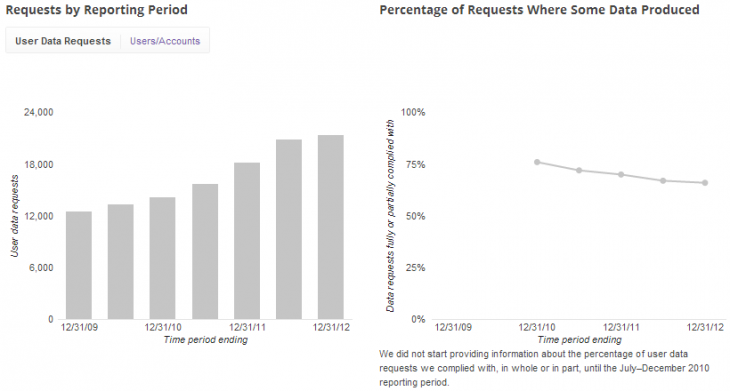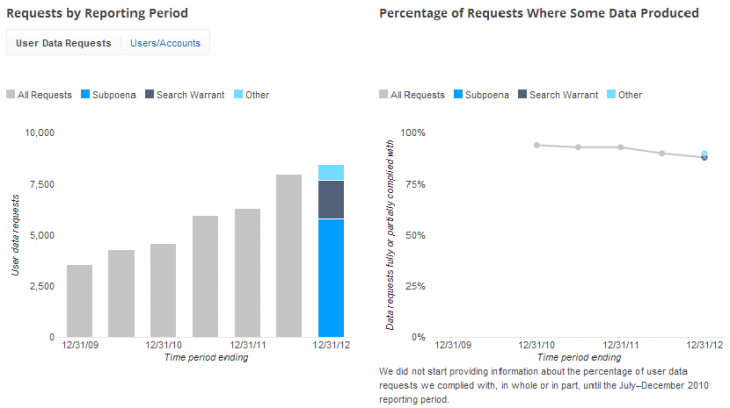
Google on Wednesday announced the latest figures for its Transparency Report, showing the steady increase in government requests for its users’ data has continued in the second half of 2012. The company hinted that the growth of the numbers is inevitable “as usage of our services continued to grow” but nevertheless the numbers are always a bit startling to look at.
A quick look at the latest statistics shows that there were 34,001 user data requests in 2011 (15,744 in the first half and 18,257 in the second half) compared to 42,327 in 2012 (20,938 in the first half and 21,389 in the second half). This constitutes a growth of 24.49 percent year-over-year, which you can see in the graph below (the good news is in the second graph; data is being produced less and less, as a percentage anyway):
As always, the US government made the most of these requests: 12,271 in 2011 (5,950 in the first half and 6,321 in the second) as well as 16,407 in 2012 (7,969 in the first half and 8,438 in the second). This adds up to a growth of 33.71 percentage year-over-year. Again, here’s how that looks in graph form:
You’ll notice that the last bar appears to be broken up into sections. That’s because Google is, for the first time, including a breakdown of the kinds of legal process that government entities in the US use when asking the company to hand over user data. From July through December 2012, here is how the requests were made:
- 68 percent of the requests Google received from government entities in the US were through subpoenas. These are requests for user-identifying information, issued under the Electronic Communications Privacy Act (ECPA), and are the easiest to get because they typically don’t involve judges.
- 22 percent were through ECPA search warrants. These are, generally speaking, orders issued by judges under ECPA, based on a demonstration of “probable cause” to believe that certain information related to a crime is presently in the place to be searched.
- The remaining 10 percent were mostly court orders issued under ECPA by judges or other processes that are difficult to categorize.
Since Google started sharing these figures, user data requests of all kinds have increased by more than 70 percent since 2009. Meanwhile, between the end of 2010 and 2012, Google’s compliance with the requests has dropped from 94 percent to 88 percent.
Image request: Robert Linder
Get the TNW newsletter
Get the most important tech news in your inbox each week.






